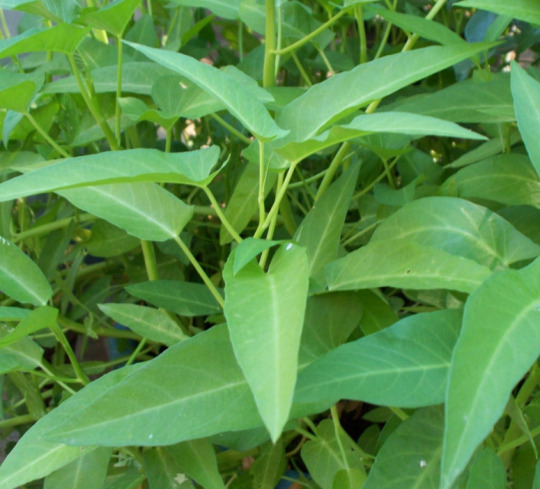#dinendeng
Explore tagged Tumblr posts
Text
Malunggay Magic: Unveiling the Power of the Philippines' Miracle Tree
Malunggay, also known as Moringa Oleifera, is a versatile plant widely cultivated in the Phippines for its nutritional and medicinal benefits. It is often called the "miracle tree" due to its high nutrient content and numerous used. Here's an overview of Malunggay and its significance in the Philippines:
Malunggay leaves are rich in vitamins, minerals, and antioxidants. They contain high levels of Vit. C, vitamin A, calcium, potassium, and iron. The plant also contains all nine essential amino acids, making it a good source of protein for vegetarians and vegans.
In the Philippines, malunggay is commonly used in various dishes. The leaves are often added to soups, stews, and broths, such as "tinola" a popular chicken soup. In Ilocos, we usually cooked into "inabraw" or "dinendeng" and used"bagoong" as a flavoring agent and mix with fried fish to add flavor.
Malunggay is also used in vegetable dishes like " "ginisang malunggay" ( sauteed malunggay), and can be blended into smoothies or used to make herbal tea.
The seeds can be eaten like peas or pressed to extract oil which is used for cooking and as traditional medicine.
The health benefits of Malunggay include:
. Anti- infiammatory properties: The plant contains compounds that may help reduce inflammation.
. Antioxidant effects: Malunggay is rich in antioxidants, which may help combat oxidative stress and support overall health.
. Immune sustem support: Its high Vit. C content can boost the immune system.
. Lowering cholesterol: Some studios suggest that malunggay may help reduce cholesterol levels.
. In traditional medicine, it is used to treat various ailments including digestive issues and respiratory conditions.
Malunggay is a hardy plant that grows well in tropical climates making it an eccellent crop for sustainable agricuture. It requires minimal water and can thrive in poor soil conditions.
The plant is also known for its ability to purify water. Its seeds contain coagulant properties, which can help remove impurities from water.
The cultivation provides a source of income for many Filipino farmers, and its yield and versatility make it a valuable crop.
The plant's various uses in food, medicine, and environmental applications contribute to its popularity and continued cultivation in the Country.
Overall malunggay is a vital plant in the Philippines, offering a range of nutritional, health, and environmental benefits. Its versatility in cooking and traditional medicine combine with its easy cultivation makes it a primary in many Filipino households and communities.
Thank you for reading. Until next time, samalat and see you soon!
2 notes
·
View notes
Text
KANGKUNGAN!
Whenever possible, Pinoys will always choose to be healthy. An example of which is Juan’s preference for vegetables. Some have this bulanglang while Ilocanos have a variety of vegetable dishes such as the famous pinakbet, inabraw, and dinendeng to name a few. But oftentimes, we put these veggies in our heads instead of putting them in our stomachs and letting it stay there where it truly…

View On WordPress
0 notes
Photo

My dinendeng... 😊 #lunch #ilovecooking #homecooking #food #foodie #foodgasm #foodandwine #foodporn #foodgram #instafood #pinoyfood #pinoycooking #dinendeng #mixveggies #pinoycuisine #lutongpinoy #asiancuisine #kitchendiva #buzzfeedfood #foodpornshare #foodphotography #huffposttaste #beautifulcuisines
#foodporn#foodpornshare#pinoyfood#foodie#instafood#beautifulcuisines#lutongpinoy#huffposttaste#foodgasm#mixveggies#asiancuisine#ilovecooking#foodgram#food#pinoycuisine#dinendeng#foodandwine#pinoycooking#buzzfeedfood#homecooking#lunch#kitchendiva#foodphotography
0 notes
Text

From left to right:
Tinola (chicken soup)
Nilaga (hearty beef soup)
Pochero (my baby, sweet beef soup)
Sinigang (the ringleader, some kind of sour soup that can go vegetarian, pescatarian, pork or beef)
Similar to how I named @starshiinee ‘s foster kittens after pastries, I named my aunt’s strays after Philippine soup dishes.
Unpictured is the “unwelcome stray” Dinendeng and “traveling stray” Karekare
2 notes
·
View notes